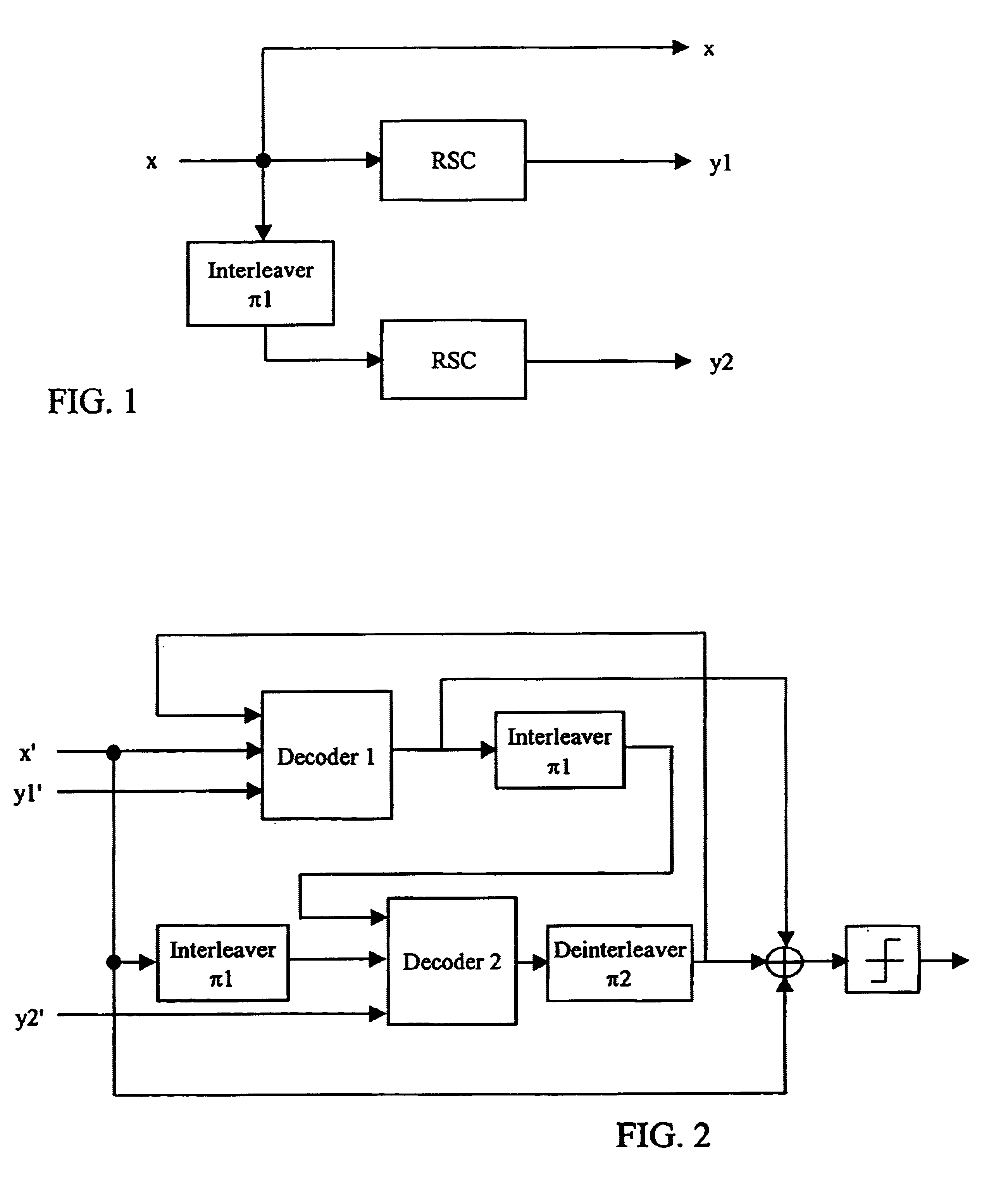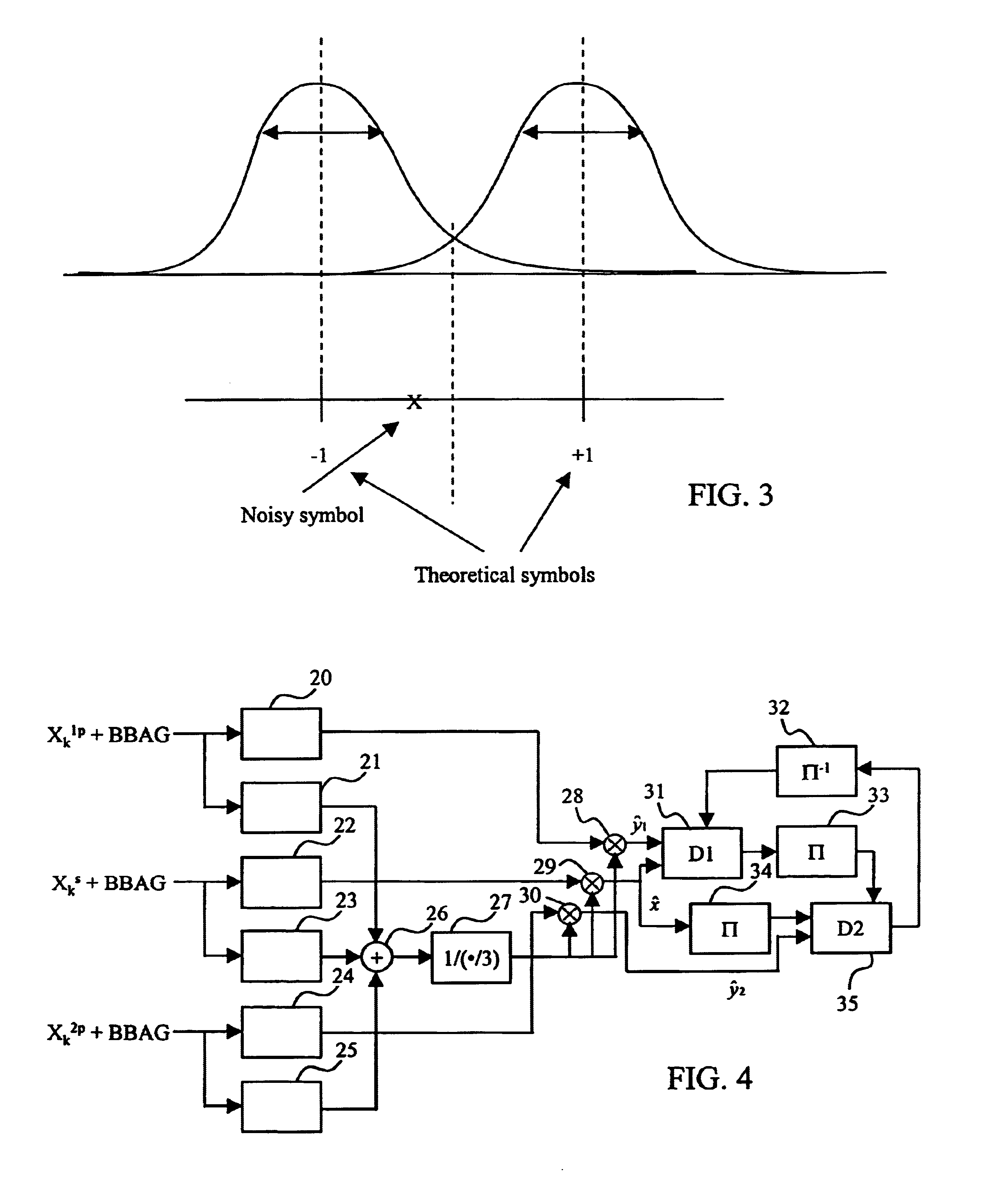Method and device for evaluating the noise associated with turbocodes, and systems using them
a turbocode and noise technology, applied in the field of turbocode noise evaluation, can solve the problems of high encoding cost, redundancy of data, and insufficient system, and achieve the effect of improving the decoding performance of the turbodecoder and being easy to implemen
- Summary
- Abstract
- Description
- Claims
- Application Information
AI Technical Summary
Benefits of technology
Problems solved by technology
Method used
Image
Examples
Embodiment Construction
[0075]In the application of the noise evaluation to turbocodes, it is possible to apply the prior art described in the introduction to the construction of a decoder including a noise evaluation device like the one illustrated in FIG. 4.
[0076]This noise evaluation device includes a module 23 for estimating the noise related to the systematic output Xks of the turbo-encoder (the notation “+BBAG” designating the white additive Gaussian noise affecting the data), a module 21 for estimating the noise related to the data stream Xk1p issuing from the first recursive systematic convolutional encoder included in the turbo-encoder and a module 25 for estimating the noise related to the data stream Xk2p issuing from the second recursive systematic convolutional encoder included in the turbo-encoder. Such noise estimation modules are detailed later in relation to FIG. 7. The symbols issuing from the three outputs of the turbo-encoder being presented by blocks, the noise estimation modules 23, 2...
PUM
 Login to View More
Login to View More Abstract
Description
Claims
Application Information
 Login to View More
Login to View More - R&D
- Intellectual Property
- Life Sciences
- Materials
- Tech Scout
- Unparalleled Data Quality
- Higher Quality Content
- 60% Fewer Hallucinations
Browse by: Latest US Patents, China's latest patents, Technical Efficacy Thesaurus, Application Domain, Technology Topic, Popular Technical Reports.
© 2025 PatSnap. All rights reserved.Legal|Privacy policy|Modern Slavery Act Transparency Statement|Sitemap|About US| Contact US: help@patsnap.com



